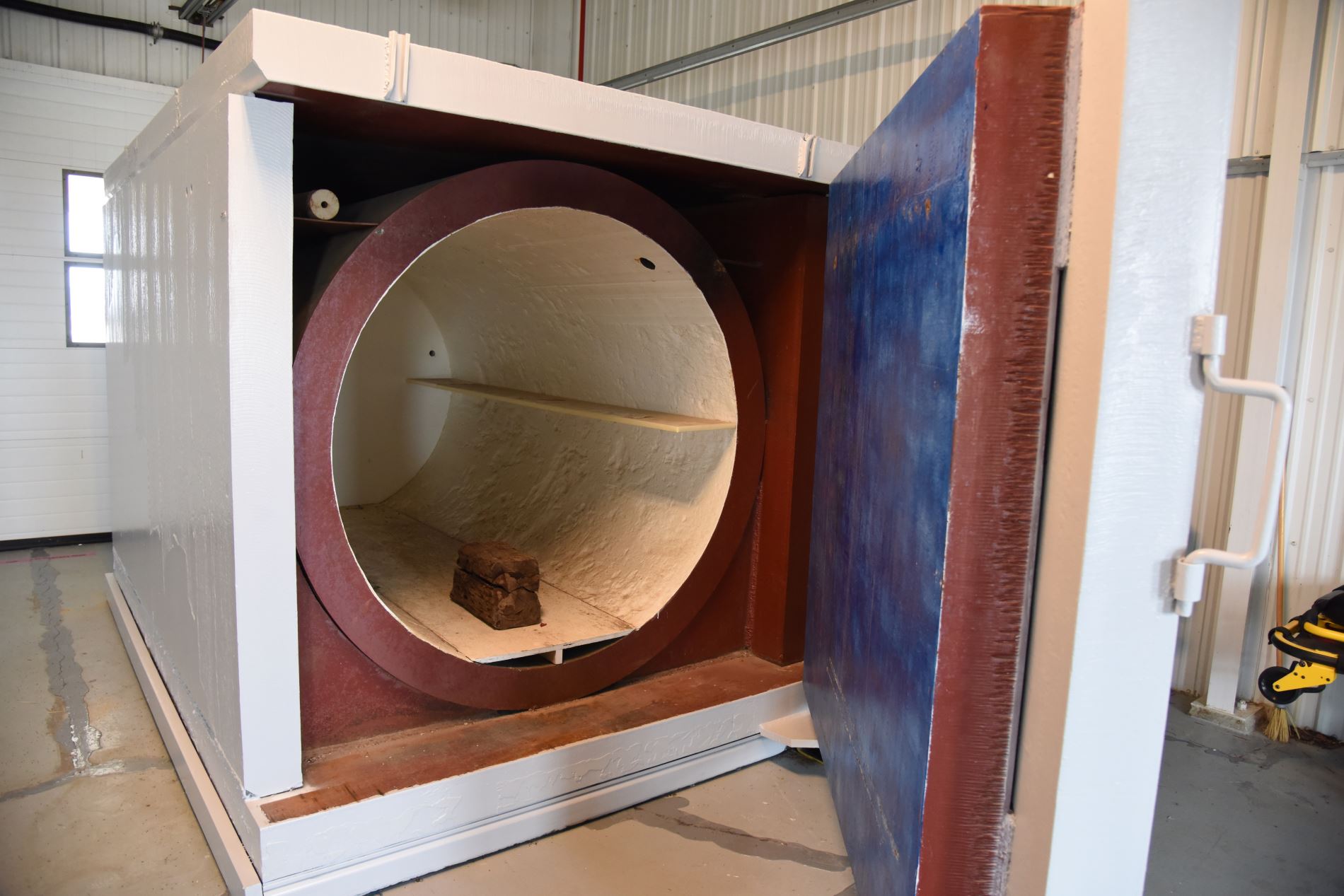Idaho Site Historical Artifact Proves Invaluable for Modern Radiation Safety
IDAHO FALLS – Much of the research at the Idaho National Laboratory is science rather than history. However, the INL location is also home to a rich history that has shaped the work of the laboratory. INL’s story lives on, informing of its current activities in many surprising forms, including a giant mid-century radiation detector salvaged for modern use due to its inestimably rare material composition.
During World War II, the U.S. Navy used the land where the INL desert site is located to test the Pacific Fleet cannons. In 1949, the Atomic Energy Commission was looking for an ideal location for their new idea, the National Reactor Testing Station, which would investigate the peace applications of nuclear technology. They selected the Arco Desert test site for this globally important research.
When the site was redesigned to meet the new goals of the National Reactor Test Station, measuring radioactivity became a key concern. Several health physicists eventually salvaged a naval gun barrel liner to help solve this problem. The lining was made of pre-war steel that is free from artificial radiation and reduces background radiation to an absolute minimum. They used this steel to build a large, full-length counter.
In 2018, following the 1951 demolition of the surrounding original radiology and environmental science laboratory, there were concerns that the counter was standing outside, unused, and exposed to the elements. The INL Group on Environment, Safety, Health and Quality was among the experts considering ways to reuse this historic artifact and tool. “This is part of the laboratory’s history. If we can use this little piece of the past to help us in the future, everyone will win,” said Chere Morgan, chief operations officer for the environment, safety group, Health & Quality .
Ultimately, this led to the full-body counter being successfully relocated to a large indoor facility and re-used for measuring background radiation from large samples or objects.
Radiological and historical context for reuse
Mary Scales English of INL’s Cultural Resources Department worked with radiological control experts to document the importance of the whole body counter. The team suggested that retention is crucial for posterity because of its unique properties. In addition, a resource analysis found that retention at INL had strong financial and radiological benefits.
“The process of documenting the removal of the full-body counter would have to document its use, take photos, and make sure everything was in order before it was removed,” said Scott Lee, manager of cultural resources. “Both the effort required to remove it and its historical significance made the decision to keep the whole body counter in place and reuse it an easy one.”
Efforts to maintain the full-body counter have been confirmed by the State Historic Preservation Office in Idaho. The bureau found that with the full-body counter, INL did exactly what agencies were supposed to do to preserve and reuse historically significant objects.
In addition to the complex historical preservation angle, moving and reusing the full-body counter had to be justified from a radiological and budgetary point of view.
After several tests, experts in radiological control showed what they had known from the start: The conversion of the whole-body counter was a radiologically flawless undertaking.
The physical movement
After the move was approved, the lab’s D&D (Decontamination and Decommissioning) team stood up for the literal heavy lifting.
The full-body counter weighs 55 tons – roughly the weight of nine adult elephants. According to Herb Pollard, the D&D manager in charge of the project, this weight is the upper limit of what his team and equipment would normally move.
Many senior D&D team members had retired shortly before the move. Incoming trainees and the remaining senior executives had to jump right into this difficult project, but they rose to the challenge. The D&D team successfully relocated the full-body switch to an ambulance bay on the INL campus, one of the few facilities with enough space for the massive structure.
“As soon as we got the full-body counter in the ambulance bay and leveled it, we ran into another problem,” said Pollard. “We had to adjust the door, which weighed 15,000 pounds, because it shifted and blocked during the move.” In the end, they also repainted and renovated the full-length counter.
The future of the whole body counter
In the future, the project team will set up the new and improved whole-body counter and determine the critical procedures required for continued success.
Radiological control experts will develop a method to help the laboratory use the whole body counter as extremely low background protection. This shield removes natural and man-made background radiation. In combination with state-of-the-art instruments, the whole-body counter can identify and characterize possible radioactive material residues on or in a device or material that is intended for reuse or disposal.
Once the items have been classified as safe, they can be released for reuse or disposal using standard methods.
“The full-body counter is a crucial part of the laboratory’s history, and it was amazing to see such a talented and dedicated team come together to make this conversion effort a success,” said Morgan.
According to Brad Schrader, a radiology expert at INL, pre-WWII steel is “incredibly rare these days. It’s unbelievable to have a few still on duty here at INL. “



Comments are closed.